Все способы:
- Вариант 1: Операционная система
- Этап 1: Поиск подходящего программного обеспечения
- Этап 2: Установка утилиты Easy Display Manager
- Этап 3: Обновление версии БИОС
- Вариант 2: Загрузочная флешка
- Вопросы и ответы: 21
Вариант 1: Операционная система
БИОС ноутбуков Samsung можно обновить только при помощи операционной системы Windows. Если на ноутбук вы установили другую ОС — базовый интерфейс придётся прошивать с загрузочной флешки.
Весь процесс обновления можно поделить на три шага: определение модели устройства, установка вспомогательной программы и непосредственно сама прошивка чипа.
Этап 1: Поиск подходящего программного обеспечения
На официальном сайте Samsung есть множество драйверов и программ для самых разных устройств. Поэтому сначала стоит выяснить, конкретно на какой линейке ноутбуков будет производиться обновление.
Перейти на официальный сайт Samsung
Найти страницу модели своего портативного компьютера можно следующим образом:
- Перейдите на сайт компании Samsung и кликните по иконке поиска.
- Определите серийный номер, который указан в наклейке на дне обшивки ноутбука.
- Введите этот номер в текстовое поле поиска на сайте производителя и нажмите «Enter».
- На странице устройства вам понадобится раздел «Руководства и загрузки». Его можно обнаружить, проскроллив страницу вниз либо нажав ссылку с соответствующей надписью.
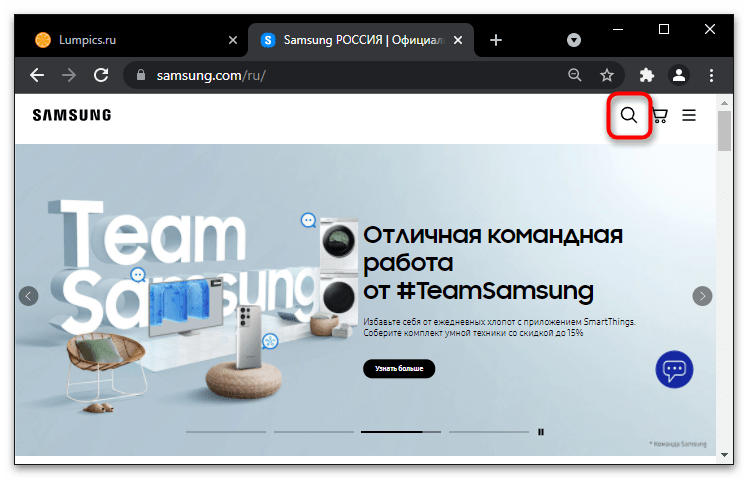
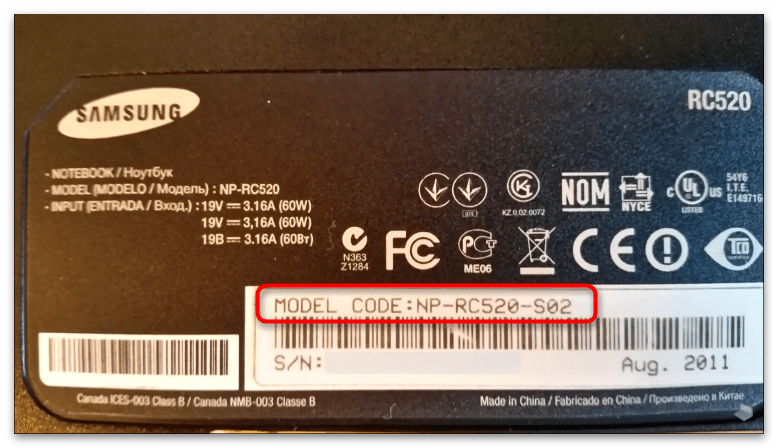
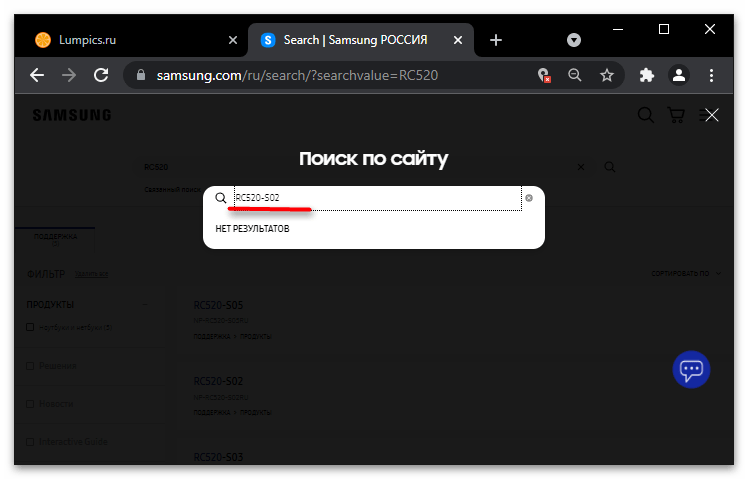
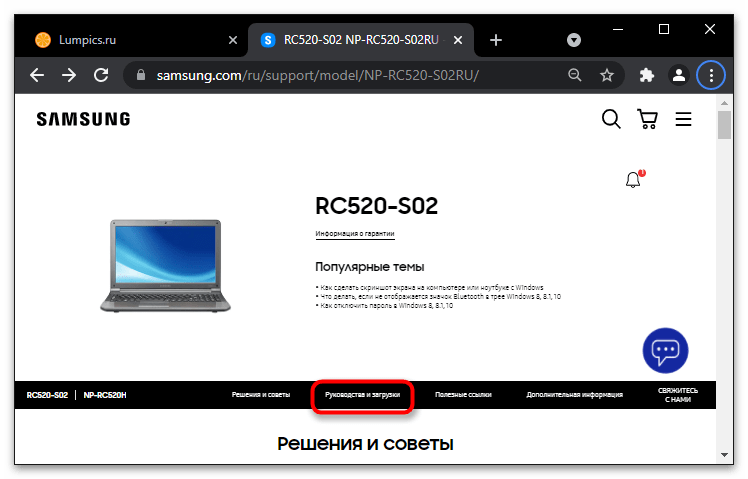
Этап 2: Установка утилиты Easy Display Manager
Для поиска и установки обновления системе требуется утилита, функции которой задействует отдельное приложение прошивки. Поэтому в первую очередь нужно установить Easy Display Manager.
- На вкладке модели вашего ноутбука сочетанием клавиш «Ctrl» + «F» вызовите инструмент поиска по странице и введите название утилиты.
- После скачайте архив данного программного обеспечения. Сделать это можно, кликнув кнопку «Загрузить» на соответствующей панели списка загрузок. Упакованный файл открывается любым архиватором.
- В первой форме мастера установки нажмите кнопку «Next».
- Далее кнопкой «Install» начните установку софта.
- Дождитесь окончания инсталляции, и закройте мастер с помощью кнопки «Finish».
- По завершении данной процедуры лучше всего перезагрузить ноутбук.
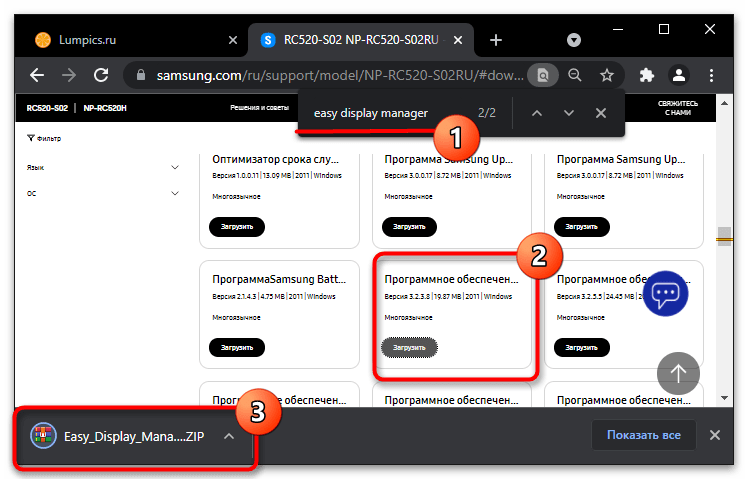
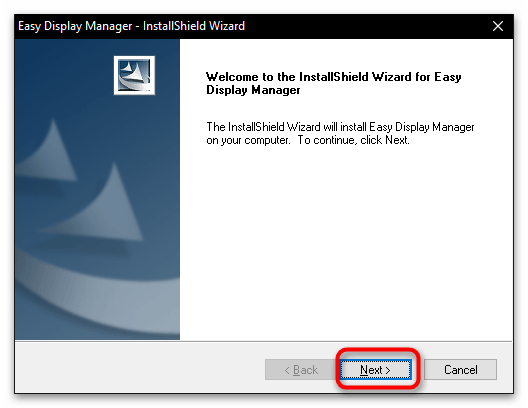
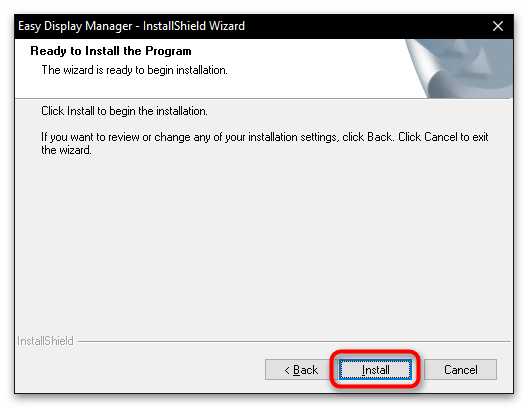
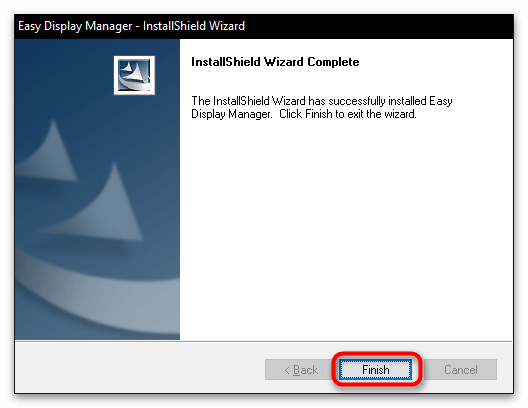
Этап 3: Обновление версии БИОС
Последним шагом нужно установить само обновление. При этом вам необходим доступ в интернет, так как лаунчер скачивает файл прошивки непосредственно с серверов производителя.
- Снова откройте страницу списка загрузок своего устройства: в самом низу списка будет панель «Update Software», благодаря которой можно скачать соответствующее приложение.
- Кнопкой «Загрузить» скачайте нужный нам установщик и запустите его у себя на устройстве.
- В окне «Samsung System BIOS Update» вам потребуется кнопка «Обновить».
- Подождите, пока файл прошивки закачается на лэптоп.
- Программа предупредит, что во время обновления операционная система может работать с перебоями и что для стабильной работы менеджера рекомендуется закрыть все лишние приложения. Кнопкой «OK» нужно согласиться с этим сообщением.
Внимание: после нажатия данной кнопки ни в коем случае не выключайте ноутбук и не закрывайте программу, пока процедура обновления не завершится, иначе он может перестать запускаться!
- Во время обновления откроется командное приложение «SFlash.exe», в котором будет виден прогресс прошивки.
- Когда возникнет сообщение об успешном обновлении БИОС, лэптоп нужно будет перезагрузить.
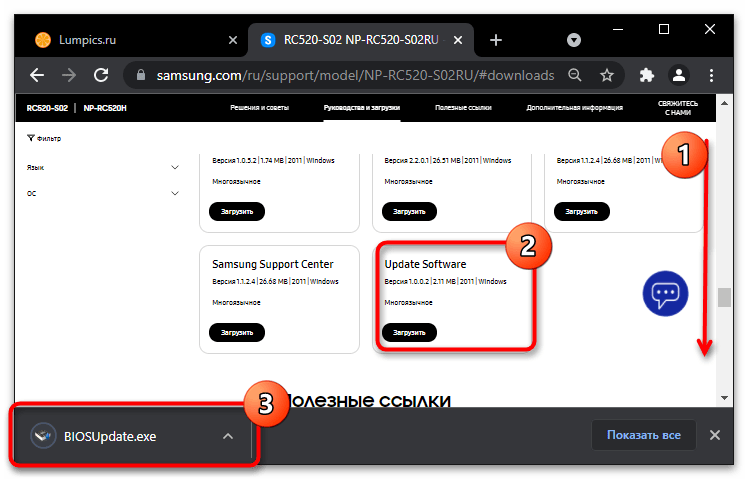
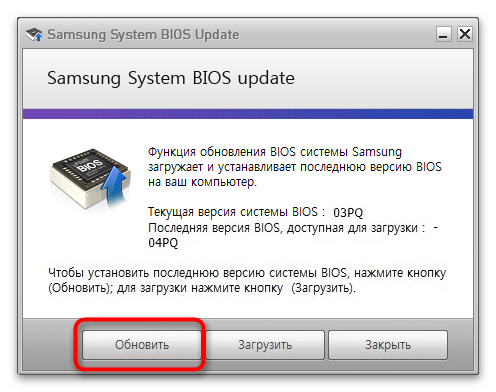
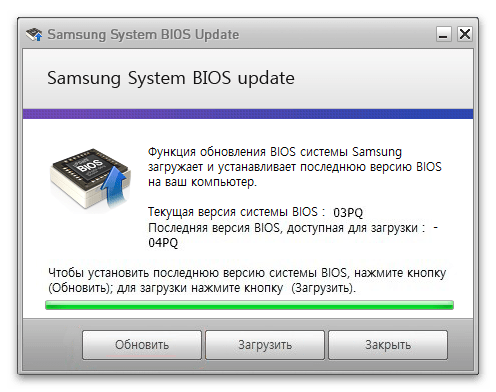
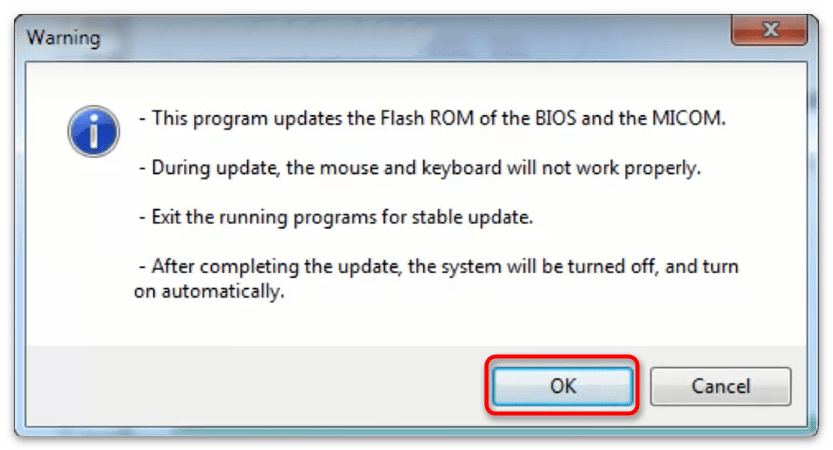
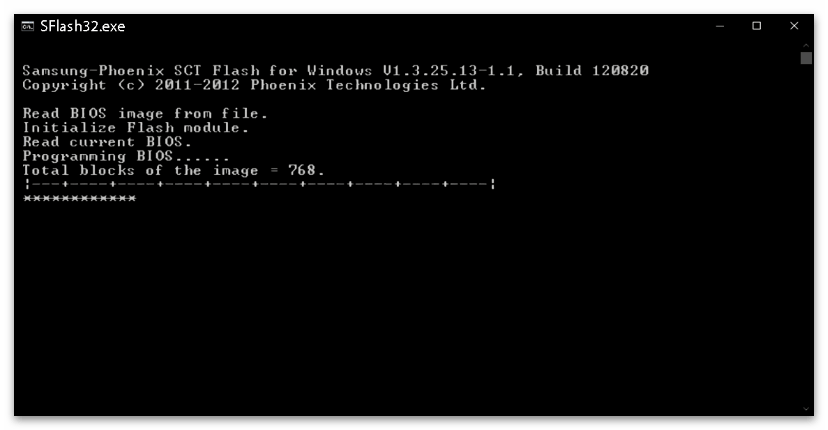
Вариант 2: Загрузочная флешка
Если у вас установлена какая-либо другая операционная система, например Linux, для обновления БИОС потребуется флешка или внешний жесткий диск с установленной на этот девайс Windows 7, 8, 10 или 11 — это называется Windows To Go (не путать с обычной загрузочной флешкой). В такой ситуации воспользуйтесь одним из приложений создания особых загрузочных устройств, а наши инструкции по ссылкам ниже вам в этом помогут.
Подробнеее:
Руководство по созданию флешки Windows To Go
Программы для установки Windows на флешку
В программной среде портативного носителя информации вы поэтапно сможете прошить БИОС, посредством воспроизведения всех действий из Варианта 1.
Наша группа в TelegramПолезные советы и помощь
Item Preview
There Is No Preview Available For This Item
This item does not appear to have any files that can be experienced on Archive.org.
Please download files in this item to interact with them on your computer.
Show all files
53
Views
DOWNLOAD OPTIONS
Uploaded by
AESE sdsfal
on
SIMILAR ITEMS (based on metadata)
Обновлено
Описание
Если скачать Samsung Update, решится проблема установки драйверов и обновления программного обеспечения. Этот софт полезен для пользователей компьютеров и ноутбуков тем, что представляет альтернативу разделу операционной системы «Драйверы и поддержка». Работает программа пока с OS Windows 10, способна облегчить работу пользователя, связанную с поиском, удалением и установкой новых программ.
Перечислим главные функции Samsung Update для Windows 10:
- производит обновление BIOS, установку драйверов и ПО;
- предоставляет список доступных утилит;
- сортирует драйвера в зависимости от типа устройства;
- идентифицирует устаревшее программное обеспечение;
- выполняет проверку проблемных и подозрительных драйверов для конкретной модели ноутбука или ПК;
- удобный русифицированный интерфейс приложения облегчает пользователю работу
- использование софта – бесплатное.
К недостаткам программы относится ручной поиск модели по номеру серии или названию и удаление устаревшего драйвера пользователем, а не автоматически. А также то, что возможность загрузить Samsung Update доступна пока только обладателям 10-й виндовс.
Скачать бесплатно Самсунг Апдейт для компьютера можете, зайдя к нам на сайт. После установки распакуйте файл с программой и поддерживающими документами. Приложение легко использовать, софт позволяет обновить или доступные компоненты сразу, или по отдельности – по желанию пользователя ПК.
Версии
Если у вас есть информация о доступных версиях программы, вы можете отправить ее нам.
SamsungBIOS Tools
Please note that this document is still a work in progress. Many parts are still missing, but it already has a lot of unique information not found elsewhere.
Samsung is not known for the quality of its BIOS/UEFI implementations. In fact, for many years they shipped laptops with broken and faulty EFI implementations that would even completely brick the machine in some cases. This is specially bad in the early Windows8 laptops with secure boot. It is also common for the latest version of a BIOS to be worse than its previous versions.
To make things worse, Samsung decided to hide all BIOS downloads from the public, making it even harder to find the files that can help to troubleshoot and recover problematic machines. Nowadays they don’t even provide any downloads anymore, except the SW Update software that is supposed to automagically download only the latest version of what is needed. There are reports of BIOS updates failing when being run from SW Update.
Needless to say, older BIOS versions are even harder to find, but there are some tricks that can help you finding yours.
Most of the data and tools gathered here came from this thread in forum.notebookreview.com. It is a pretty old and long thread with lots of valuable information. It can also be a bit confusing and overwhelming.
I am creating this repo to organize the data and knowledge from the thread into a smaller and simpler footprint. It is also a way to backup the data from there while adding valuable new information.
I started this because I needed to format a Samsung ATIV Book 6 670Z5E-XD2 that has been «erratic» for some time. It was not accepting a fresh Windows 10 install (or installs and breaks after update). I ended up using CSM (no EFI) to install Windows 10 and that gave me the better results (with the latest BIOS, since older ones did not help). Then you also need to be careful with AMD video drivers, since some of them will also break windows and make it not even boot. This also includes the Windows Update drivers (yep, they also break the machine and they will install even if you turn updates off). I may eventually create an info page about this notebook with all the data (open an issue if you need it).
As of March 2021, the current Windows 10 installer doesn’t even load in EFI mode in 2 different Samsung laptops I tried (older versions would run, but break at the end of the installation).
Get the latest BIOS first
One of the most important steps is to find out what BIOS family your computer uses. The easiest way is to obtain the latest (recommended) version of your BIOS. This will also provide us with the full filename of the BIOS installer, which is going to be usefull when we are searching for older versions.
BIOSUpdate.exe
Samsung does not make it easy as they could here. They have a software that downloads the latest version of your recommended BIOS, but it is no longer listed anywhere in their webpage. It is only available through SW Update and it will not be offered if you already have the latest BIOS.
One official link is: http://downloadcenter.samsung.com/content/FM/201203/20120306155317061/BIOSUpdate.exe
It is not that hard to find copies on other sites though, just Google «BIOSUpdate.exe» (at your own risk). After running, hit Download to get the latest version file. It is good practice to check if the downloaded version Hardware ID matches the current installed BIOS (read below).
Linux BIOS downloader script
You can download with this script.
Manual download
Another option is to find out the current version, use Samsung’s webservice to check for a new version and then generate a link with the response FileName.
First find out the current version:
- Press F2 on Boot to enter the BIOS and see the version
- Open Windows «System Information» (you can search) and check the version
- Using
dmidecodein linux - Using
cat /sys/class/dmi/id/bios_versionin linux
After that we will know the Platform ID, which is usually the last 3 letters of the main BIOS String.
So for example, I have a laptop that shows the BIOS Version in «System Information» as:
American Megatrends Inc. P05ADG.010.140421.SH, 21/04/2014
- P05ADG is the main BIOS model and version
- P05 is the version (will search for P04, P03, P02, P01, P00 if looking for older BIOS)
- ADG is the Hardware ID (we will use it to check the latest BIOS file and link)
Now we add the ADG Hardware ID into the following URL
http://sbuservice.samsungmobile.com/BUWebServiceProc.asmx/GetContents?platformID=[ADD_HARDWARE_ID_HERE]&PartNumber=AAAA
So
http://sbuservice.samsungmobile.com/BUWebServiceProc.asmx/GetContents?platformID=ADG&PartNumber=AAAA
The response is
<Content xmlns:xsd="http://www.w3.org/2001/XMLSchema" xmlns:xsi="http://www.w3.org/2001/XMLSchema-instance" xmlns="http://sbuservice.samsungmobile.com/"> <ID>21363</ID> <Version>P05ADG</Version> <Importance>0</Importance> <MsgType>0</MsgType> <AutoInstall>0</AutoInstall> <ExclusiveInstall>0</ExclusiveInstall> <FilePathName>ITEM_20140512_21363_WIN_P05ADG.exe</FilePathName> <FileSize>1</FileSize> <Downloaded>0</Downloaded> </Content>
We want the node <FilePathName>, so we get
ITEM_20140512_21363_WIN_P05ADG.exe
With this we can download the file by appending it to
http://sbuservice.samsungmobile.com/upload/BIOSUpdateItem/[APPEND_HERE]
So
http://sbuservice.samsungmobile.com/upload/BIOSUpdateItem/ITEM_20140512_21363_WIN_P05ADG.exe
The file name also shows us important information that will help when trying to find previous versions:
- 20140512 — The date when it was published (does not align with BIOS date, but is usually about 15 days later)
- 21363 — File ID (incremental file number -usually- unique to each file)
So if we were to try and find an older version (eg. P04ADG), we already know its date is going to be before 2014/05/12 and its File ID is lower than 21363.
Flashing the latest BIOS
If you just want to upgrade your BIOS to the latest version and is currently running a previous version, you may just run the latest Samsung’s executable and let it do its thing. It will upgrade the BIOS and MICOM in most cases.
If you are already running the latest BIOS and try to reinstall the Samsung’s installer will complain about the version and quit execution. So in this case we will need to get the contents inside the installer so we can run it mannualy. The same applies to older BIOS. So we can only run the official BIOS installer if we currently have a previous version of the same BIOS installed. This is important because in many cases we will need to downgrade 1 extra version, to be able to use the official installer of the next version. For example, we manually install P03ADG, reboot, and then install ITEM_20140401_21347_WIN_P04ADG.exe.
Extracting Installer files
Samsung uses several vendors for its BIOS, which translates into having to deal with different programs and formats, depending on each machine.
It is kind of a pain to get to the files inside the installer. The easier way is to fetch them from the %temp% folder. Depending on your installer this will be more difficult, because some installers only extract the BIOS files after you hit continue and then immediatelly delete the files after using or cancelling execution. This is what happened to me, so I used a script to copy the files continuously. credits t456
Download the script or create getSamsungFiles.cmd with this content:
rmdir /s /q %temp%\SamsungBIOS mkdir %temp%\SamsungBIOS :start robocopy %TEMP%\__Samsung_Update %TEMP%\SamsungBIOS /E :: Uncomment next line for %programfiles(x86)%\UEFI WinFlash :: robocopy %programfiles(x86)%\UEFI WinFlash %TEMP%\SamsungBIOS /E goto start
We are now ready to run the installer. Some things to note:
- If you are in Windows10, right-click the installer > properties > turn ON compatibility mode for Windows 7.
- This will also prevent Win10 from blocking the unsigned executable.
- You should run the installer in Administrator mode.
- You MUST run
getSamsungFiles.cmdBEFORE the installer and before hitting OK (just double click it). - Running the installer in an invalid system should be ok (it should extract and then cancel because it is an invalid system).
- It does not matter if the installer completes or not. In most cases we do not want it to complete, we just want the files.
- Some installers will only extract all files when you tell it to upgrade the BIOS.
- Some installers use
%programfiles(x86)%\UEFI WinFlash. In this case you need to fetch it manually or modifiy the script above.
You can open the target folder by simply pasting %TEMP%\SamsungBIOS into run or windows explorer’s address bar.
If all went fine, you should now have the files in %TEMP%\SamsungBIOS. In this case, you can close getSamsungFiles.cmd window to stop it.
And then create a folder somewhere (eg. P04ADG) and copy or move the files (getSamsungFiles.cmd recreates %TEMP%\SamsungBIOS each time it runs, deleting everything).
Executables
There are 3 main executables that Samsung uses to flash and one of them will be available in your package:
- Winflash
- Afuwin (afuwinx64)
- SFlash (SFlash64)
You may also download the equivalent GUI for some of them (at your own risk). In this guide we will use an administrator DOS prompt and the flash tool that came with the BIOS package.
ROM formats
The BIOS file name will probably be the same as the BIOS ID + extension.
Eg. The BIOS file inside ITEM_20140401_21347_WIN_P04ADG.exe was named as P04ADG.CAP
The usual BIOS extensions are:
- .ROM
- .CAP
- .BIN
Any of them should work fine with the flash tool it came with.
Flashing the extracted BIOS
Here things vary a lot depending on the system. If you were able to actually install a BIOS using the Samsung installer (ITEM_XXXXX.exe) you will probably find the commands used inside the file DebugAppLog.txt. This is the only way to know exactly what command your BIOS file should use, but in most cases we can try a similar approach to each Flash Utility even without the Log.
Another important thing to mention is that more often than not the problem is NVRAM corruption and not really the BIOS itself (even though a faulty EFI is probably the culprit for the NVRAM corruption). This means that clearing the NVRAM may be enough to fix a faulty Samsung BIOS. Also, manually reflashing the current version may help in many cases, because it may also reset the NVRAM. Some Flash tools have commands to clear the NVRAM, but there could be some risk involved (erasing things you shouldn’t). Some people were able to revive semi-bricked laptops with those commands though, so it may be of help in some cases.
—- I AM STILL EDITING —-
Detective Work
Because there are no recent listings of Samsung’s file repository and they are not even listing the downloads in their website anymore, finding an older version can be quite challenging.
The naming convention used by Samsung into the ITEM_XXX.exe files ends up being the means on which we can guess possible BIOS file names and then just test if a file exists for download there. In other words, we brute force our way onto finding the older BIOS. It is not pretty, it may take a long time, but it works (most of the times).
Because there is a lot of educated guessing in this process, having more information helps a lot. Have we had a complete list of valid 'ITEM_XXX.exe' files and we wouldn’t have to guess at all. Because of how these file names are structured, it is easier to guess DATES and FILEIDs if we have a more complete list. The more we know, the easier it gets. Also, there are 2 big jumps in FILEID’s (on specific dates), which add 10000 each and make the brute force attempts harder (if you try all those 20k extra possible IDs).
Because of this mechanic, I made a bit of an effort to compile a more complete and up to date list of 'ITEM_XXX.exe' files, indexed by date. Just by looking at the list intervals makes easier to correlate DATES with possible FILEIDs and make a better educated guess in the brute-force search. Trying a smaller interval of dates and IDs makes the search A LOT faster (smaller permutation).
I made a few bash scripts to help me process, gather, filter and sort the data. They are in the lists folder
Because my compilation also includes the latest BIOS for all possible Hardware IDs (in theory), you should be able to do a simple text search for your Hardware ID and find at least one BIOS (the latest as of 2021/04/22). If an older version ever made into the list, you will also find it in the same search.
The file ItemList.txt is the compilation of all the data I was able to gather from:
- BIOSItemList(112912).xml: List from Nov 2012 (link)
- BIOSItemList (Google Cache Jan 31 2013).txt: List from Jan 2013 (link)
- Tavinus01.txt: I manually copy-pasted all
'ITEM_XXX.exe'that anyone posted as found in the 38 pages here - PermutedLatest_20210422.txt: I created a list with all possible permutations from AAA to ZZZ and then tried to get the latest BIOS file name to each of them, discarding invalid responses. This is the most complete and recent list of latest BIOS files and adds a lot to the guessing pool.
Last Update date : May 08. 2024

Software updates are a vital part of keeping your laptop or notebook running its best. It’s important to periodically check for updates since they are released at different intervals. To make things easier, your Samsung laptop or notebook allows you to quickly check and apply updates. You can even customize the update options, so they’ll only happen at times that are convenient for you.
Note: Information provided applies to devices sold in Canada. Available screens and settings may vary for laptops and notebooks sold in other countries.
Use Samsung Update
Note: Samsung Update is not available on the Galaxy Book S. If you want to update this device, use Windows Update instead.
Samsung Update is usually preinstalled on Samsung laptop or notebook, but you can download it from the Microsoft Store if you don’t see it.
Samsung Update allows you to download updates and drivers for your Samsung software. Select Start, and then scroll to and select Samsung Update. Enter your laptop or notebook’s model number in the Search bar at the top right, and then choose the appropriate software version. Select your desired drivers or installation files, and then click Download. The updates will automatically install.

If you aren’t sure about your laptop or notebook’s model number, click How to find your device model name, and then follow the instructions.
Use Windows Updates
You do not have to fire up your browser to check for updates; you can look for them right from your Start menu. Click the Start icon, and then click Settings. Click Update & Security, and then click Check for updates. If Windows finds updates, they will download and install automatically.

There are other update options available in this menu. For example, if you don’t want to perform an update right now, you can pause updates for 7 days. Here are the available update settings:
- Pause updates for 7 days: Prevent any updates from automatically installing for a week.
- Change active hours: Set the time you are using your laptop or notebook, so it will not automatically restart. You can even automatically adjust the active hours based on your activity.
- View update history: See which updates were made and when. Here you can uninstall updates and also access the recovery mode.
- Advanced options: Receive updates for other Microsoft products, change restart options, and more.
Uninstall updates
There are times when an update can cause more harm than good. If needed, you can uninstall a recent update to make things go back to the way they were.

Click the Start icon, and then click Settings. Click Update & Security, and then click View update history. Click Uninstall updates, and then right-click your desired update. Click Uninstall, and then click Yes to confirm. Wait for the update to be removed; during this process, your laptop or notebook may restart.
Update device drivers
Updating device drivers can be done through either Samsung Update or Windows Update. Windows Update may mark these updates as optional. These drivers are needed to run system apps and connect devices.
Depending on what device you are connecting, you can get drivers for Samsung devices from our Support Centre. If drivers are not available for the device, then the drivers available from Samsung Update and Windows Update are sufficient. Devices or components made by manufacturers other than Samsung may offer drivers directly from their site. See Microsoft’s help article for how to install and update drivers.
Update apps
Although you can update Samsung apps using Samsung Update, to update all the apps on your laptop or notebook, open the Microsoft Store (open the Start menu and type store, then click on Microsoft store to open it).
In the top right, if some apps are already available for update, you may see a download icon and the number of apps awaiting download. Otherwise, click the three dots and then Downloads and updates. Once here, you can use the Get updates button to check all your apps for updates, and the Update all button to download all updates that are already detected as available. Or you can pick and choose which ones to download. Finally, you can click the three dots again and select Settings to enable the setting to Update apps automatically (which should be on by default).
If the Microsoft store app itself is one of the apps being updated, the store will close as the update is performed. Reopen the Microsoft store app and check again for updates if this happens. It is also good to check for app updates after updating to a new version of Windows 10 from Windows update.
It is also possible to install desktop apps that are not found in the Microsoft store. These apps are completely maintained by their developers and you should use any update tools the app offers or check with the app developer’s website to find information on when and how to update it.
Note: If you no longer have use for an app and want to uninstall it, read our guide.
Thank you for your feedback!
The coding for Contact US > Call > View more function. And this text is only displayed on the editor page, please do not delet this component from Support Home. Thank you
